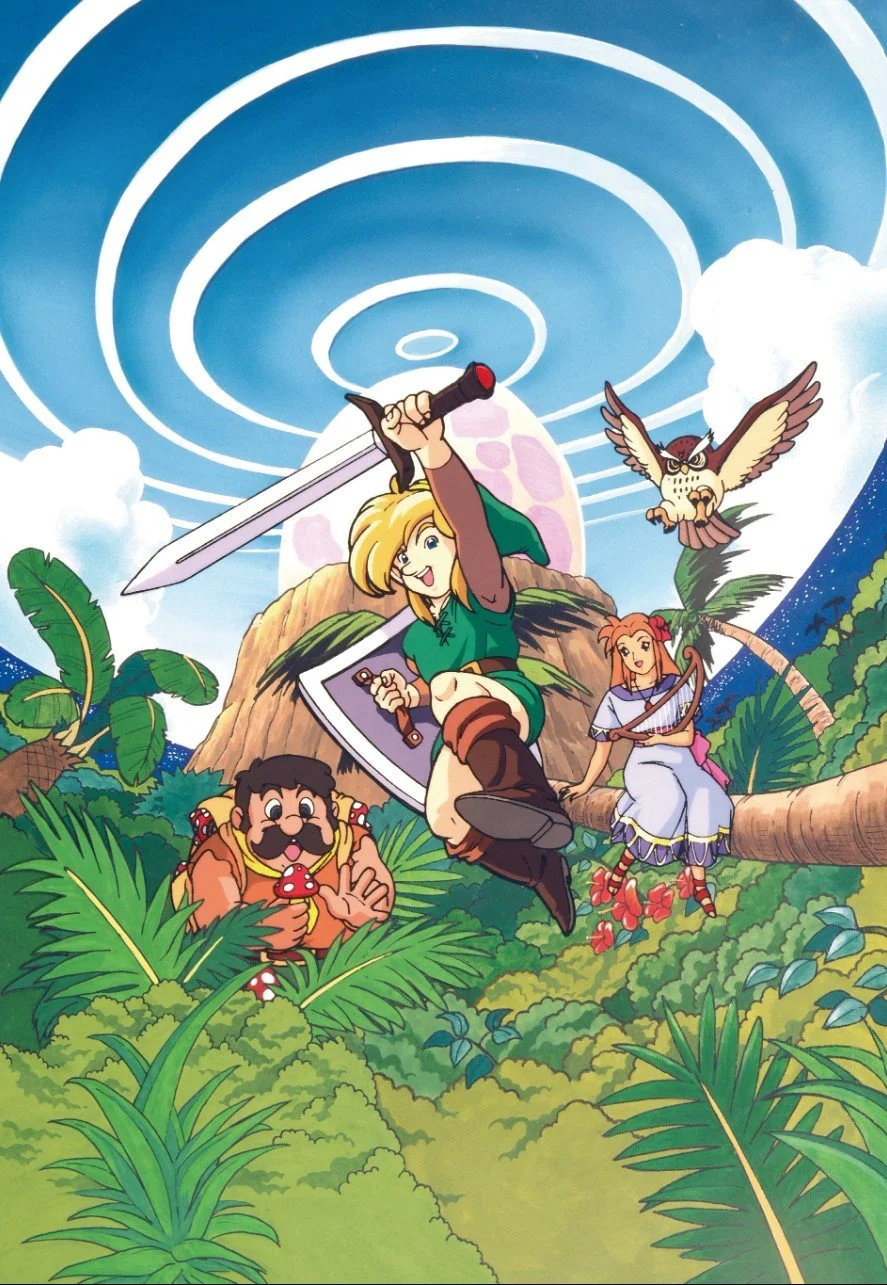Nov 6th 1-2-3: Creative Constraint Can Be Freeing - Link’s Awakening 1993
Greetings and salutations!
It has been a great week. Today, I want to go over the story behind a video game that I’ve always held dear.
This would be The Legend of Zelda, Link’s Awakening.
So what’s the story behind Link’s Awakening?
1: The Story Behind The Story ( 3 minute read )
What if you took all that a series was known for and got rid of it?
Well of course there is a level of hyperbole, but truly what was a Zelda without Zelda like?
This is what we got to see happen for the first time in the history of The Legend of Zelda, its first diversion.
The Legend of Zelda A Link to the Past had been released the year before in 1991 and had set a new bar for the series.
It had a rich world filled with creatures and characters, refined mechanics, and a compelling narrative.
The team at Nintendo had delivered a bonefide success on the Super Nintendo Entertainment System console.
What would come next, however, was not as powerful.
The Game Boy was all about technical constraints.
The screen was smaller.
The hardware was weaker.
The graphics were limited.
And it had no color.
If Nintendo is stranger to something, it is not constraint and challenge.
They didn’t view it as a negative, rather they saw the constraints as a chance for creative freedom.
Initially they had through they would port A Link to the Past for the Game Boy.
As the team was planning, they realized that not only were they having a lot of fun developing, they also wanted to take more liberties.
They decided to not port A Link to the Past and instead make something else.
Since they would not be porting or trying to replicate an SNES console game experience, they felt they “could try something different.”
Different indeed.
According to director Takashi Tezuka, they game was created, “in the free spirit of an after‑school club”
With this in mind, during early planning they decided not to place the game in Hyrule they way they normally did.
They also deliberately chose to remove Zelda from the narrative, along with elements like the Triforce and Ganon.
Creative constraints at work.
Koholint Island would be the new setting.
The story revolves around Link being ship wrecked on this Island and learning about the Wind Fish, a giant whale-looking fish sleeping at the top of the mountain on the Island.
Link would have to collect the eight instruments of the Sirens in order to awaken the Wind Fish.
No Princess Zelda.
Writers and designers chose to reference surreal, off beat inspirations.
One of particular note was Twin Peaks, which inspired the characters in the game to have an odd and suspicious vibe.
Along with the odd whimsical characters the team also included cameos from other Nintendo Franchises such as characters and monsters from their Super Mario Bros series.
As a result, Link’s Awakening has a unique and quirky feel that emanates throughout the game.
Since they were developing on the Game Boy, the team opted to utilize that constraint and make the world smaller.
However, they compensated this with density of design, stuffing the game with tons of secrets, cameos, characters, and a different structure of dungeons and exploration.
An Island is a self contained environment, they used this as a reason to make the game feel full and rich without needing that massive world size.
All of this was wrapped in a tone of dream like quality.
Reality vs dreams.
Identity and impermanence driving all of the narrative core.
The game is a uniquely distinct in that it feels like you’re playing something quite unlike a Zelda game, and yet it is clearly a Zelda game.
Link’s Awakening was released in Japan in June of 1993, with North America and Europe following several months later.
It was critically praised and reviewed highly amongst critics. Everyone was astounded how the team was able to bring a rich Zelda experience to a handheld device.
One criticism that appeared regularly was about the monochrome graphics on the Game Boy.
Later in 1998 a DX color version would be made of the game, adding color and new content.
Fast forward over to 2019, and an entirely new remake of Link’s Awakening was remade in a miniature graphical style.
The game is a stand out in the series, and was the first time that the developers chose to take risks and change some of the standard conventions in Zelda and they did this to great effect.
Much of the later titles were far more experimental and the spirit of freedom can be felt in later titles in the series.
Even today, I would highly recommend playing the game in any form as it is truly a delight to experience the Island of Koholint.
All from a creative restraint, and deciding to view it as freedom.
2: Creative Insights From Us
I. What kind of constraints can you embrace this week? Perhaps only limit yourself to one medium, or one scale, or perhaps one writing prompt or topic. Find the freedom in it.
II. What kind of dream-like ideas do you have? How could you express that through your art?
3: Inspirational Quotes From the Team
I. “We began in the free spirit of an after‑school club… so the contents are quite unrestrained.” — Takashi Tezuka
II. “It wasn’t until Link’s Awakening that the series started having a proper plot.” — Eiji Aonuma (on the series)
III. “The world, the story, the island—all of it began to feel like we were making a parody of The Legend of Zelda.” — Tezuka
Thank you so much for reading!


